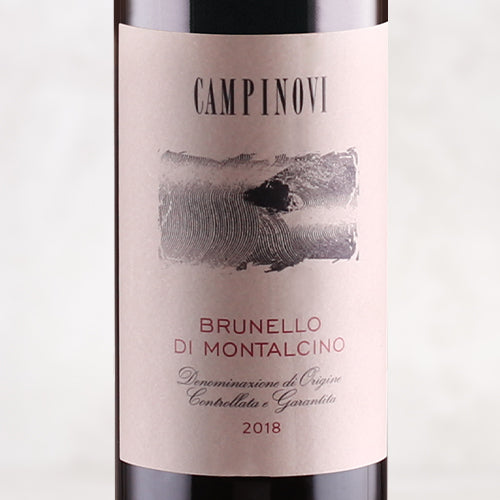Changes in Latitudes
Viticulture ventures northward in response to climate change. A report from the recent VitiNord conference, held last December in Burlington, Vermont.
It’s common knowledge in the world of wine: Vineyards only grow between 30 and 50 degrees’ latitude. Closer to the equator and it’s too hot and humid. Closer to the poles, it’s too cold.
Amid climate change, many believe wine regions will simply shift northward—that, as global temperatures increase, the parts of the world known to be colder today will turn into prime locations for beloved classics such as Pinot Noir, Chardonnay, or Riesling. But it’s not as simple as finding ideal temperatures. The further north we travel, the lower the light intensity, even with longer days in summer. That’s simply because northern latitudes are angled less directly to the sun. So, farming must adjust to lower light levels and swift summers. But for most growers, it also means planting different grape varieties.
Since 2006, a group of growers and winemakers from some of the world’s northern-most regions have been working to tackle the issue. Alternating between Europe and North America, the group meets every three years for a multi-day conference, called VitiNord, to strengthen the potential for vineyards in cold climates. Last December, they met in Vermont, bringing together researchers, media, farmers, and winemakers from Sweden, Denmark, France, Canada, and across the United States. In 2025, they’re looking to reconvene in either Finland or Latvia.
Much of VitiNord considers the potential for alternate grape types, most especially inter-specific hybrids. Hybrids are wine grapes bred as a cross between vinifera, the species of grapes most associated with fine wine, and another grape species known to be hardier to colder climates.
Hybrid Grapes
Non-vinifera grape species can be found all over the world. Breeders have created hybrids between vinifera and numerous North American species, but also those found native to Scandinavia or parts of Asia. The goal is to create a vine that grows well in the unique conditions of lower temperatures and northern light levels while also producing delicious wine. Some hybrids are also created to address other climate issues such as high humidity, viruses, or fungal diseases.
From Northern Europe, the variety Solaris has proven successful. It’s crisp, aromatic, racy character offers wine lovers the feeling of bringing Pinot Gris, Riesling, and Muscat Ottonel together in one glass. In Vermont, the white grape La Crescent delivers resplendent acidity with the fleshy flavor of ripe apricots, pears, and chilled nectarines.
In the Finger Lakes of New York State, the red variety Léon Millot gives anyone searching for a mid-weight red wine a deeper toned, savory alternative to Gamay or Valdiguié. In Quebec, growers have added the red grapes Frontenac and Petite Pearl to their repertoire. Both produce a mid-weight wine. Petite Pearl tends towards darker flavors of plum skin and blackberry, with a healthy sprinkle of cocoa powder. Frontenac proves versatile, lending itself to a range of styles from rosé to a dry table wine, a dessert wine, or, perhaps most exciting, sparkling, all with the flavors of blue fruits, cherries and plum. But the unique character of these hybrids often demands new perspectives in winemaking.

New Perspectives
Thanks to the unusual parentage of hybrid grape types, the innate chemistry produced during fermentation tends to differ from that found in vinifera. Hybrid-based wines often have much higher natural acidity levels, making the mouth pucker and water. Winemakers working with such grapes have learned to explore distinctive winemaking methods as well.
In Vermont, Deirdre Heekin has made a name for her La Garagista winery. She works with a range of cold-resistant hybrid grapes. More recently, she’s begun collaborating with newer winemaker Camila Carrillo. Together, they’ve created a series of solera-style wines that take an intentionally oxidative approach to the grapes they work with. Known as the Lost Causes & Desperate Cases series of wines, each bottling brings together different varieties some white, some red. One of my favorites, Found Love, is made from the white variety La Crescent. It captures lifted notes of alpine flowers with a palate of fleshy ripe fruits, even as its exuberant acidity is curbed into a crunchy, almost-salty, chalky note by the wine’s solera approach.
Torben Toldam Andersen of Denmark has been experimenting with Solaris. As a macerated (skin-contact) white it becomes savory, and its acidity more approachable. In sparkling pet-nat, the aromatics dominate while the palate becomes more muted. I must admit my favorite approach for Solaris is a straightforward white that delivers a healthy balance of its spiced-floral nose with nuanced flavor and an ultra-long finish.
Others have realized the swiftest route to create balanced wine is blending. Back in Vermont, Doug Becker of Montepelier Vineyards creates a delicious method traditionelle rosé with a blend of hybrids Frontenac Gris, Frontenac Noir, Crimson Pearl, and Sabrevois. And from the mountains of Pennsylvania, Grovedale Winery created a surprising rosé with a kiss of sweetness by blending the highly aromatic hybrid Valvin Muscat with a splash of juice from Cabernet Sauvignon for color and spice.
Other producers have succeeded in growing vinifera in colder regions as well. Out of the high-elevation slopes of Western Colorado, Jack Rabbit Hill Farm makes Round Tower, a red blend of Malbec, Merlot, and Petite Verdot in their best vintages. The vines are perched at over 5,000 feet, regularly covered in snow for winter, and sometimes monsoons in summer. The extreme growing conditions create a leaner body compared to the plush and generous character found in more traditional regions like Argentina or Napa Valley. But the result is a pleasing, classic style with flavors of firm dark fruits as much as fresh picked herbs and desert earthiness. It’s a new region delivering worthwhile wine.
And ultimately, that’s the point of VitiNord. Thanks to the collaborative nature of its attendees, cold climate producers are carving a new way forward for wine.








